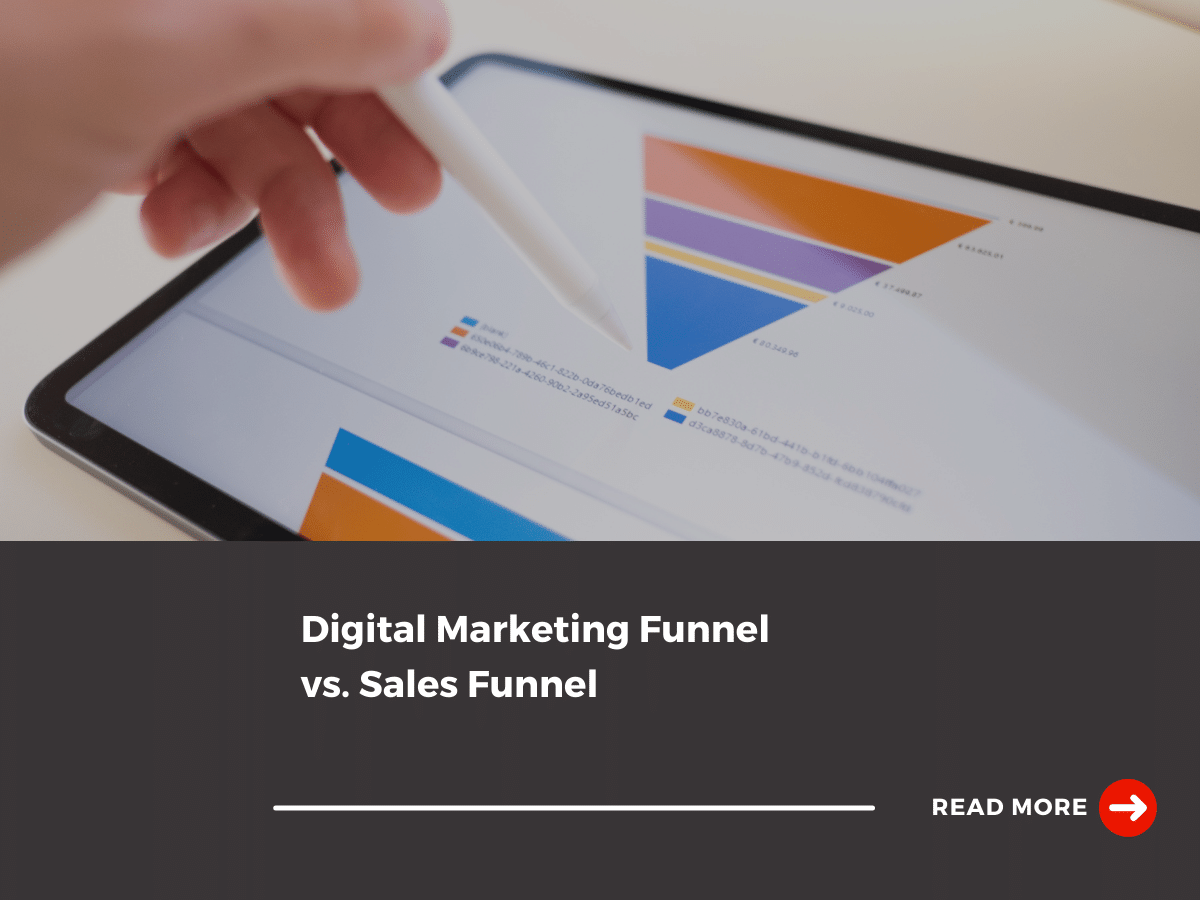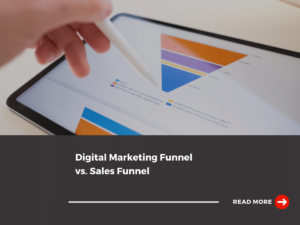Many businesses operate as if sales and marketing are two different silos. Each team may be focused on similar KPIs and objectives but work on different tasks and initiatives to get them closer to more conversion, sales, or revenue.
The marketing team is typically focused on raising awareness and educating your audience on your products and services. While sales reps are focused on turning prospects into paying customers.
While the marketing and sales funnel your team uses in their day-to-day life will vary, digital marketing sales funnels should be optimized to align with your company’s bottom line. In this article, we’ll discuss how your sales and marketing teams use these funnels to outline the different stages in the process and how you can optimize yours for success.
Here’s everything you need to know:
What is a Marketing Funnel?
Marketers use different digital marketing efforts to build awareness around products and services. They develop campaigns that use SEO, email marketing, social media, and PPC to attract prospects to the digital marketing sales funnel and nurture the leads into paying customers.
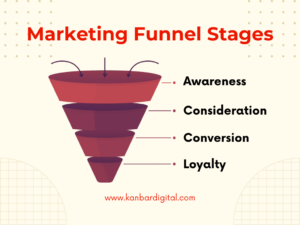
The four most common marketing funnel stages include:
- Awareness: During the awareness stage, marketers use email marketing, paid ads, and social media to build brand awareness.
- Consideration: Once a prospect is familiar with your brand and actively engaging with your marketing campaigns, they are pushed to the consideration marketing funnel stage. During this stage, marketers use content to address any goals or challenges your products and services aim to solve.
- Conversion: Once a prospect reaches this stage, they are considered a qualified lead and will most likely make a purchase on your website. Marketers will also hand their leads to the sales team during this marketing funnel stage.
- Loyalty: Repeat customers have a higher lifetime value than one-time purchases. Once you push a prospect through the four different marketing funnel stages, it’s time to focus on your retention initiatives to keep these customers engaged.
What is a Sales Funnel?
Customers who were once marketing-qualified leads (MQL) enter this sales funnel as sales-qualified leads (SQL) and are nurtured through the sales funnel. The sales funnel is a customer’s buying journey. These prospects know your products and services and already understand what you offer, pricing, and more. There are four main stages for a sales funnel. This includes:
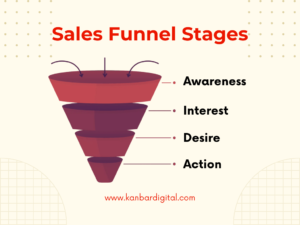
- Awareness: Once an MQL completes the marketing funnel, they are converted to SQL. During this stage, your sales team is responsible for nurturing the leads with strategic messaging, meetings, or demos to highlight the benefits of your products and services.
- Interest: Once an SQL shows interest in your products and service, they will request more in-depth information from your sales team. They may use a free trial or plan additional meetings to discuss your products and services further.
- Desire: At this stage of the buyer’s journey, the customer knows if they want your product. While they may still be weighing their options or comparing the pros and cons, they will likely convert with the right marketing and sales tactics.
- Action: At this stage, the prospect is ready to purchase. During this stage, marketing and sales teams typically work together to use different tactics to get them to convert with special offers and discounts.
How Do Marketing and Sales Funnels Complement Each Other?
The main goal of both the marketing and sales funnel is to get a prospect to convert. While both teams use different tactics and strategies to nurture the leads and generate demand, they are still tied to a common goal.
Your marketing team will build awareness through digital marketing initiatives, while your sales team will focus on closing deals. When crafting lead generation strategies for your business, you’ll want to ensure you have a sales and marketing alignment and implement best practices. Some best practices to keep top of mind to ensure there’s a seamless transition from marketing to sales:
- Set clear goals and KPIs for both funnels
- Maintain consistent brand messaging
- Make time for quarterly customer journey optimization
- Re-evaluate and optimize based on data and conversion rates
What is The Unified Funnel Approach?
The unified funnel approach prioritizes the customer’s needs throughout the customer journey. It finds ways for marketing and sales to work together more effectively to convert leads into paying customers while ensuring both departments have goals aligned with the company’s bottom line. There are many benefits to a unified funnel approach over traditional marketing and sales funnel methods. This includes:
- Better allocation of resources
- Consistent messaging and support at every stage of the funnel
- Easier to identify issues and problems in the funnel
- Enhance the customer experience at every stage of the funnel
Tips for Integrating The Sales and Marketing Funnels
The sales and marketing funnels complement one another and are designed with the same goal. Here are some tips to help you achieve a successful sales and marketing funnel alignment.
“Tag Team” The Funnel
A great way to standardize the buyer’s journey and ensure your sales and marketing funnel achieves alignment is to divide the tasks. For example, your marketing team will focus on the awareness, engagement, and consideration journey stages, while the sales team will focus on conversion, retention, and loyalty. While there may still be some overlap between the two departments, splitting up the tasks will ensure everyone is working towards a common goal.
Develop a Messaging Strategy
Consistency is vital to converting prospects into paying customers and retaining current customers. Consistent messaging can also improve loyalty and build rapport. While dividing the tasks in your sales and marketing funnel, consider what messaging components you want to keep consistent across the entire funnel. This includes offers, promotions, and CTAs.
A/B Test Your Techniques
When you A/B test different elements of your funnel strategy, you can optimize your strategic approach to align with your customer’s needs. Some elements you can consider testing include:
- Language
- Marketing initiatives (paid, email, social)
- CTAs
- Promotions, offers, trials
- Digital marketing initiatives
- Sales tactics
Consider A/B testing one element at a time to see what delivers the best results. This way, you can slowly revise your strategy over time.
Have the Right KPIs
Key performance indicators keep your team aligned with a common goal. They are vital to keeping your sales and marketing team on task and to see how close or far you are from reaching your goals. The KPIs you choose to track will depend on your overall goals.
Some KPIs you’ll want to consider:
- Free Trial to Paid Conversion Rate
- Customer Retention Rate
- Customer Lifetime Value (CLV)
- Churn Rate
- Number of Demos Requested
Take Advantage of Automation and AI in Marketing and Sales
The rise of artificial intelligence and automation has unlocked doors for new opportunities to improve. It also helps streamline the customer journey and optimize each digital marketing sales stage.
Let’s take Hubspot, for example. When a prospect books a demo on their website, they are automatically greeted with an email confirming the demo booked, and the sales team will jump in to set up the demo and move the lead forward.
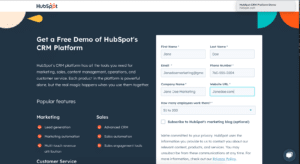
All of the marketing initiatives in this example are automated to complement the sales process, providing your team greater flexibility and giving your team more time back in their day to focus on other customer journey optimization tasks.
Why Do Sales and Marketing Funnel Alignments Fail?
Marketing and sales funnels are not always aligned how you need them to be. There are many reasons why a sales and marketing funnel alignment might fail. The three most common reasons include:
– Unclear Goals
If you don’t have clear goals and KPIs, your team will struggle to stay on task and reach their goals. It may also be challenging to know what is and isn’t working and determine the ROI.
– Lack of Communication
If your team isn’t meeting regularly and discussing challenges and opportunities, it can impact the buyer’s experience. A sales and marketing alignment often fails because your team is not communicating effectively. Your team must build mutual trust and understand one another’s part in the customer journey.
– The Team is Working Towards Two Different Goals
A goal alignment is crucial to all sales and marketing funnel stages. If your sales and marketing team is working towards two completely different goals, the messaging and initiatives won’t complement one another. This can negatively impact the buyer’s experience and lead to low conversions.
Enhance Your Digital Marketing Sales Funnel With Kanbar Digital
Your digital marketing sales funnel is designed to complement your lead-generation strategies and help you convert prospects into paying customers. At Kanbar Digital, we’re here to help you fine-tune your marketing approach and provide expert customer journey optimization tips. We understand the complexities of a marketing and sales funnel alignment and want to help you find the best approach for your business dynamic.
Let us know how we can help, and we’ll take it from there. Contact us today to get started.

